Manors
photo © Visit Finland
Manors in Finland
Finland is dotted with Manor Houses, the vast majority of which are to be found in the southern part of the country, especially in areas which continue to be mostly Swedish speaking, although the region around Porvoo is particularly abundant with them. Many of these manors now operate as tourist attractions, or have developed into museums, with others available to visit by prior arrangement.
Anjala Manor
Located in Anjalankoski by the Kymijoki River, approximately 140km east of Helsinki, Anjala Manor was originally built in the 16th century, and was owned by the Wrede family until 1837. The old main building by destroyed by Russian artillery in 1789, and the current main building was built at the turn of the 18th and 19th centuries according to the classical ideal prevalent at the time. Since 1957 it has served as a museum, with the granary which was built in the 1840s serving as a cafe.
Annala Manor
Located in Vanhakaupunki in Helsinki, Annala Manor was built in 1832 and is one of the oldest holiday cottages in Finland. It stands atop a hill surrounded by a public park and gardens. Today it is owned by the city of Helsinki.
Alikartano Manor
Located in Mäntsälä, 50km north of Helsinki, Alikartano Manor was founded in the early 1600s and was known as Frugård until 1783. The present main building was completed in 1805, and is a unique mix of architectural styles that includes elements of Baroque, Caroline, Classicism, and Rococo. The previous main building from the 1730s is still in existence next to the present main building, and is used as a café. The State acquired the manor in 1964, and opened it to the public as a museum in 1983.
Bodom Manor
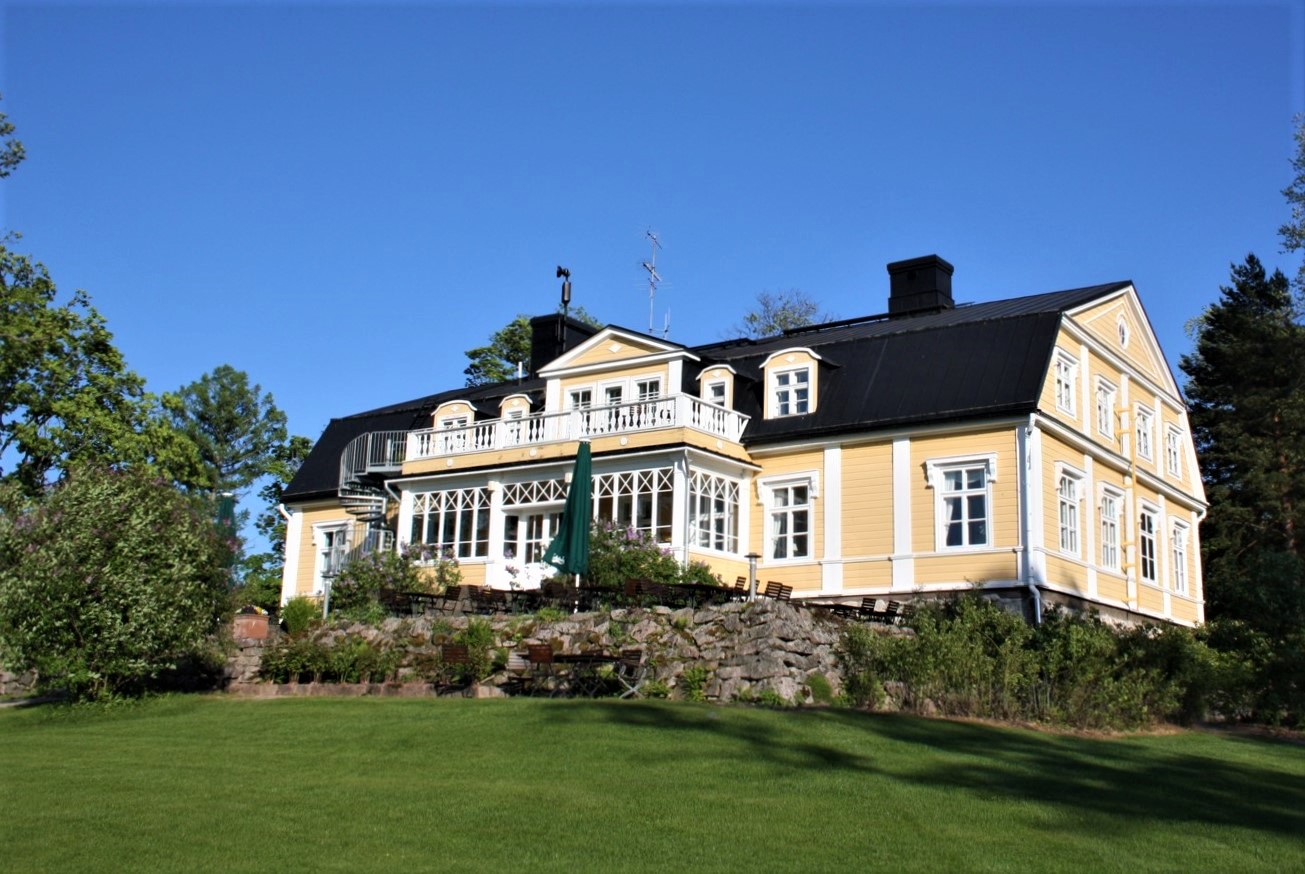
Located on the shore of Lake Bodominjärvi just outside Espoo, Bodom Manor was completed in the late 1700s and reconstructed twice since then, in 1885 and 1930. Today, the manor is used as a conference centre, as well as a restaurant, and there is a golf club on the grounds.
Espoo Manor
The second manor in Espoo, and the more important, dates back to 1556, although the present main building dates from 1797. It was enlarged and remodeled in 1914, and within the grounds you’ll find a mill from the 1750s, and a bridge from 1777 on the King’s Road which passes the manor. This walved bridge is the oldest in Finland. Today, the manor is a popular venue for weddings and other private functions, and guided tours of the manor can be arranged by request.
Gumböle Manor
Also located near Espoo is Gumböle Manor, which is now owned by the city and mostly used for receptions and other official meetings. The present main building dates from the 1840s, although the interior has been remodeled several times since then. The gardens shich surround the manor date from 1914, with stables near the house built around 1900. There is a golf course and riding club nearby.
Hirvihaara Manor
Located a few kilometres west of Mäntsälä, just 50km north of Helsinki, Hirvihaara Manor can trace its history back to the 16th century, although the present main building was completed in 1918 and designed by Jarl Eklund. During the Winter War of 1939-40, the manor served as a convalescent home for injured soldiers. Today it is a popular hotel, conference centre, and restaurant.
Haikko Manor
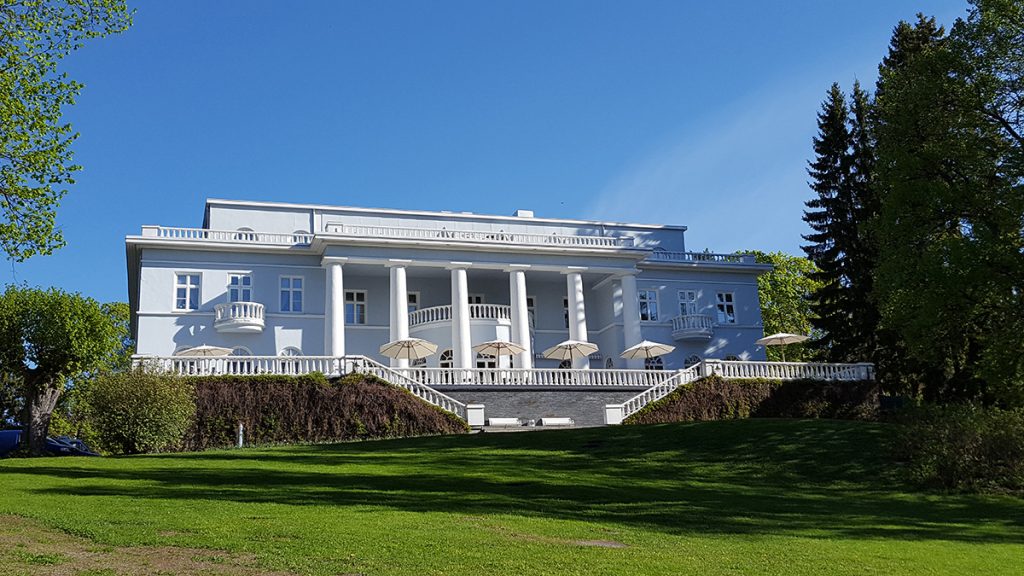
Located less than 50km east of Helsinki on the Gulf of Finland, Haikko Manor can trace its history back to 1362 when it was owned by a Dominican Monastery. During the Russian rule it was popular with members of the Russian imperial family, and included Grand Duke Wladimir and Grand Duke Kiril among its guests. The present main building was completed in 1914 and was designed by Armas Lindren, although the exterior with pillars wasn’t completed until 1966, when it was opened to the public as the first manor hotel in Finland. Today, it continues as a hotel, conference centre, and as a Spa, with 224 guest rooms.
Hatanpää Manor
Located in Tampere, the first main building of Hatanpää Manor was built during the time of Baron Hans Henrik Boije (1758-1778). This was destroyed by fire in the early 1880s, and rebuilt between 1883 and 1885, in a mostly Neo-Renaissance style with Baroque elements in the façade. The manor used to have an orchard, and today a rose garden stands where the orchard used to be. Within the manor grounds you’ll find the Hatanpää Arboretum, the delightful Villa Idman, and the Vapaamuurarin Hauta, or Freemason’s Grave, an old stone onto which a Gospel verse has been engraved in Greek. Hatanpää Manor and the park were handed over to the city of Tampere in 1913. Later, Hatanpää Hospital was added to the manor area. Today a Museum of Dolls and Costumes operates in the Hatanpää Manor main building.
Herttoniemi Manor
Located in one of Helsinki’s suburbs, Hertoniemi Manor dates back to the 16th century. In 1815 a building from the porcelain factory which was built in 1760 was converted into the main building of the manor. Within the manor grounds are red houses from the Knudsbacka farm complex which were transferred from Sipoo in the 1920s, as well as two Neo-classical summerhouses designed by Carl Engel. The manor sits in a park desinged mainly in the Baroque style, with English Romantic elements, and an avenue of oak trees. The manor has been open as a museum since 1925.
Huso Manor
Located on what used to be an island outside Helsinki, a connecting road to Huso Manor was built in the 1860s. The main building was built in the middle of the 19th century, in the Empire style popular at the time, and a second floor was added in 1911. Today, the manor is owned by the city and is home to one the most famous riding schools in Finland.
Jokioinen Manor
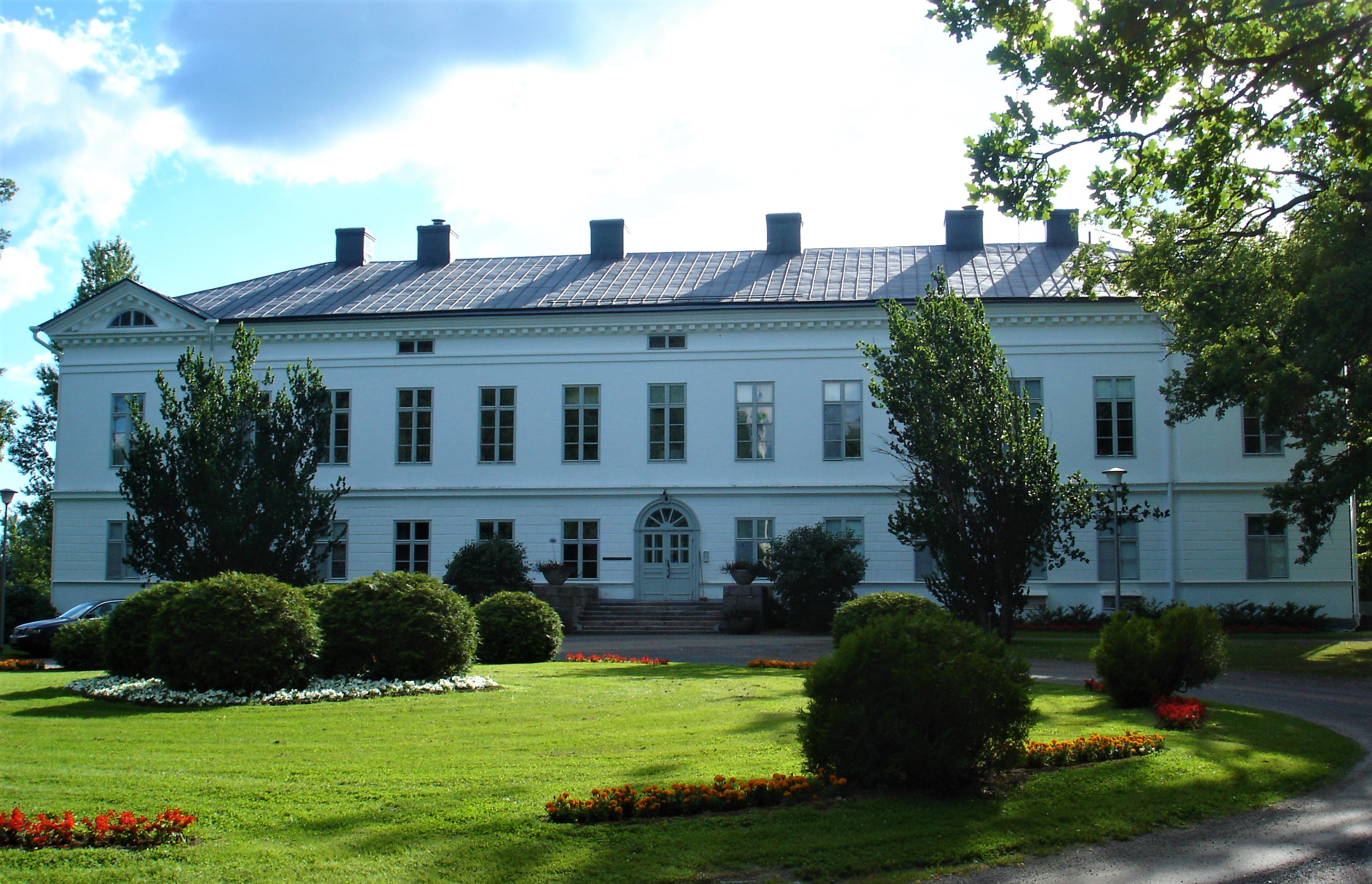
Located near the town of Forssa, about half way between Helsinki and Pori, Jokioinen Manor was founded in the early 17th century. The present main building was completed in 1798, and is one of the oldest Neo-classical buildings in Finland. The granary next to the manor is believed to have moved here from Humppila around 1810, the clock in the Baroque styled tower dates from 1811, and the bell from 1687. This building is now used to house art exhibitions in the summer. Also within the grounds is a mansard-roofed cowshed which was built in 1799. The State acquired the manor in 1918, and it has been used by MTT Agrifood Research Finland Organization since 1928.
Kellokoski Manor
Located just outside Kerava, less than 30km north of Helsinki, Kellokoski Manor was built in 1884-1889 in the style of the renaissance palaces of Italy. It was remodeled and enlarged in 1914-1915 to serve as a hospital, a fuction it continues to serve to this day.
Kiiala Manor
Located just a few kilometres north of Porvoo, Kiiala Manor dates back to medieval times, although the present main building wasn’t completed until 1769 by General Carl Johan Adlercreutz in the Rococo style. It was remodeled in the Empire style early in the 19th century. One of its more famous inhabitants was the Finnish national artists Albert Edelfelt who was born here in 1854. The current appearance is from the 1880s when the main building was once again remodeled, this time in the villa style. The distellery next to the manor was built in the 1880s, and today is used as a shop and a restaurant. Visits to the main building can be arranged by advance booking.
Kullo Manor
Located just outside Porvoo, Kullo Manor dates back to the 1620s and has been renamed many times over the years. The main building was completed 1683 and was one of the first Caroline style buildings in Finland. The present main building was completed in 1914, also in the Caroline style. Today, it is privately owned, but has a shop specialising in classic clothing on the grounds, as well as a golf course, and visitors can also pick strawberries in their season.
Kumpula Manor
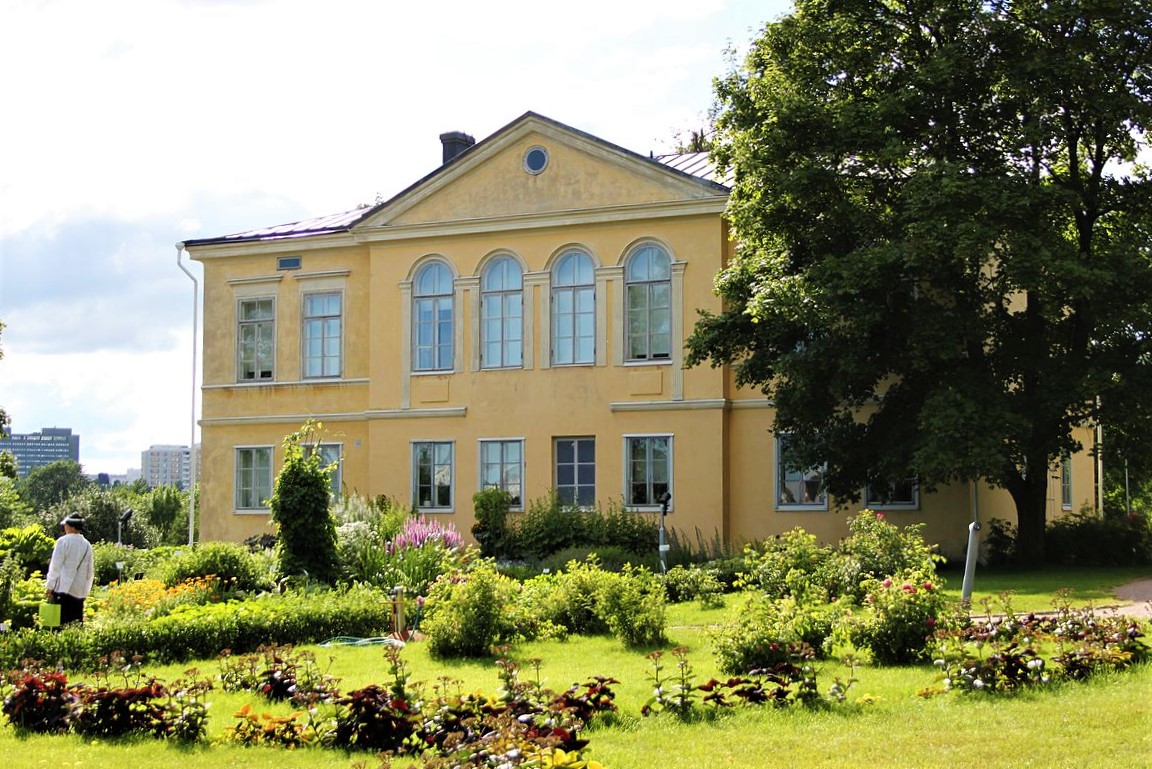
Located on the outskirts of Helsinki, Kumpula Manor (also known as Gumtakt Manor) dates back to the late 15th century. In 1840 the manor was bought by Baron Johan Gabriel von Bonsdorff who replaced the old wooden main building with a two-storey stone building in the Empire style. Today, it is used by Helsinki University, and there is a botanical garden in the yard. Every year on 13 May the University students celebrate the arrival of spring on the Kumpula fields. The Finnish national anthem was first sung in the spring celebration of 1848.
Kuusisto Manor
Located near Kaarina on an island around 15km southeast of Turku, Kuuisto Manor dates back to the 14th century, and was one of the most important buildings in Finland in the 1680s. The present main building was completed in 1738 and is one of Finland’s oldest wooden residential buildings. It came under the management of the National Board of Antiquities in 1977, and was opened to the public as a museum in 1986.
Laupus Manor
Located in Kustavi about 70km west of Turku on an island, Laupus Manor dates back to the 15th century, with the owners being known since 1569. The present main building was completed in 1919, and is a mix of different architectural styles including Art Nouveau, National Romanticism, and both English and German cottage styles. In the front yard there is a memorial stone commemorating Volter Kilpi, a famous author, who was born in Kustavi in 1874. Today the manor is used for private functions and as a conference centre.
Lahti Manor
Although the owners of Lahti Manor have been known since 1540, the present main building was completed in 1898 and was designed by architect Hjalmar Åberg. Until 1919 the manor was owned by Captain August Fellman, at which time the town of Lahti gained possession. Over the years it has served many purposes, including being a school and a part of a military hospital. Since 1968 it has been a museum run by the Lahti Historical Society.
Lavila Manor
Located some 20km east of Rauma, Lavila Manor was founded in 1630. In 1931 the manor was split into two sections, the earlier main building, from 1906, is now a high school, and the new main building dates from 1922. The granary next to the main buildings was built in 1836 in the Empire style and is now used for exhibitions.
Lepaa Manor
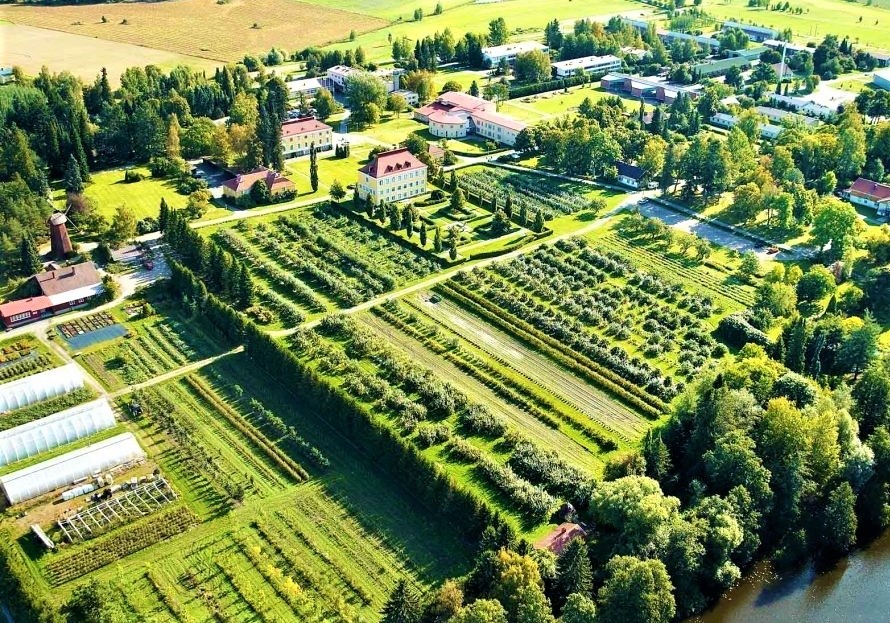
Located outside Hattula about 15km north of Hämeenlinna, Lepaa Manor may have been founded as early as the 13th century. The oldest part of the main building dates from the end of the 17th century, but was remodeled in the early 19th century in the Empire style. Most of the outbuildings of the manor date from the 19th century. The chapel in the manor grounds is the only building of the original medieval church, and there is also a windmill dating from the beginning of the 18th century. The original garden was created in the 1760s, the Baroque garden was created in 1935, and the English park dates from the 1840s. Today the manor serves as a school for horticulture and landscape design, although it also provides accommodation, meals, and facilities for conferences.
Louhisaari Manor Castle
Located on the southwest coast of Finland just 30km north of Turku, Louhisaari Manor is one of two palatial manor castles in Finland, and is famous for being the birthplace of Marshal Carl G.E. Mannerheim. The main building dates from 1655, although the basement of one of the outbuildings dates back to the 16th century. It is surrounded by an English landscape park, and is now owned by the National Board of Antiquities who opened the manor to the public as a museum in 1967.
Luukki Manor
Located in Espoo, in the Nuuksio Nature Park, Luukki Manor dates back to the 17th century. The present main building was completed in 1925 and functions as a café today. A long avenue of birch trees lead to the manor, and it is surrounded by an outdoor recreation area.
Meilahti Manor
Located in Helsinki, Meilahti Manor can trace its history to the end of the 15th century. The present main building and annex were built in the 19th century, although the current appearance dates from 1913 when it was remodeled. The manor is now owned by Helsinki city, and the wooden building serves today as a café. It is situated in beautiful parkland, and the Meilahti Art Museum is located on the grounds.
Moisio Manor
Located in Elimäki, less than 20km south of Kouvola, Moisio Manor dates from the 17th century. The present main building was designed in the Empire style by Carl Engel and was completed in 1820. Today, you can enjoy exhibitions in the manor, and it also operates as a conference centre.
Mukkula Manor
Located in Lahti, the owners of Mukkula Manor have been known since 1539. The present main building dates from the end of the 18th century but was enlarged at the beginning of the 19th century. Its appearance now dates from the remodeling done in 1898 and in 1937, mostly in the Empire style but with a Rococo roof. Today, the manor is used as a hotel, restaurant, and a conference centre.
Mustio Manor
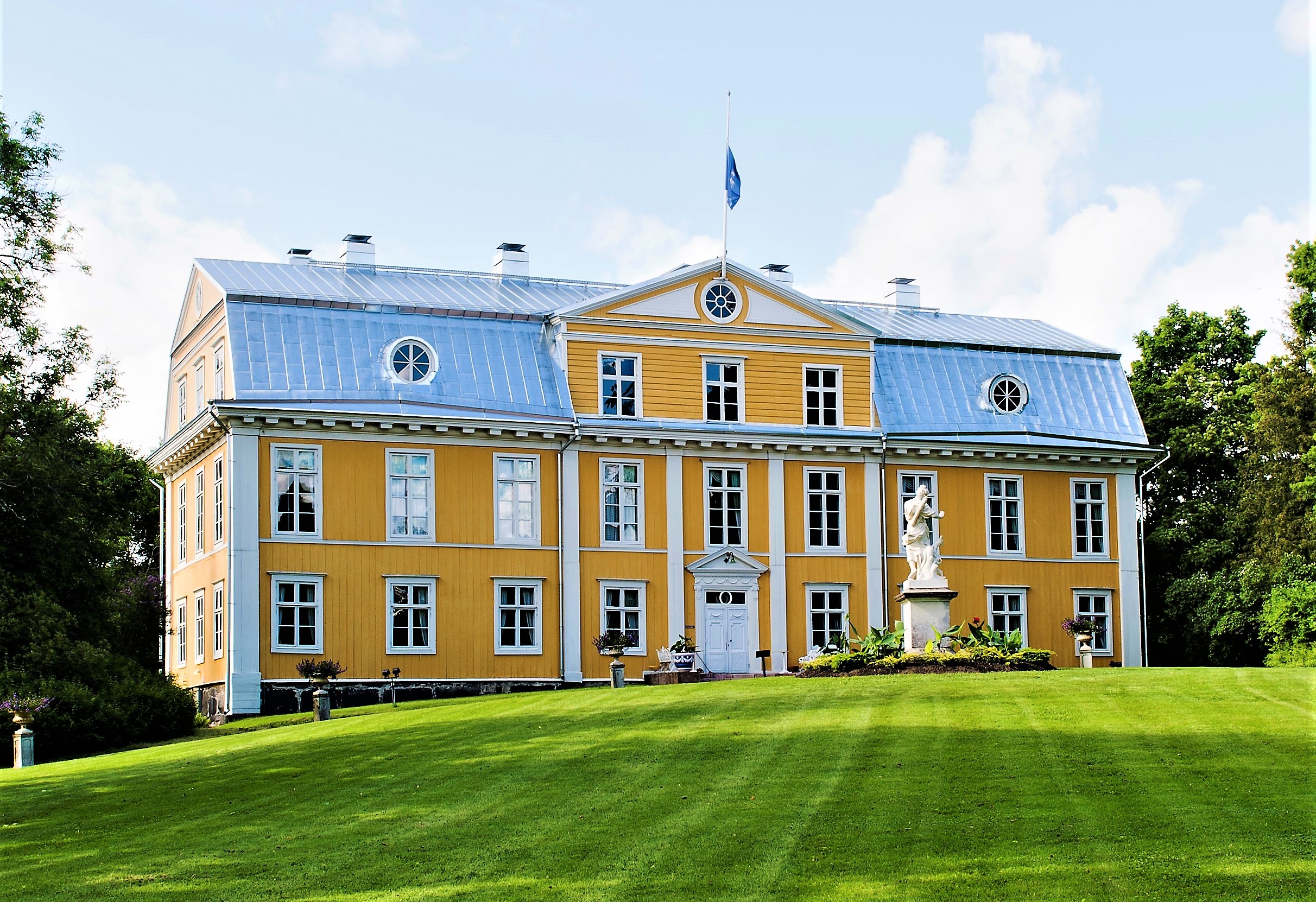
Located less than 20km south of Lohja and less than 60km west of Helsinki, Mustio Manor (also known as Svartå Manor) was designed by Christoffer Friedrich Schröeder and Erik Palmstedt in the Neo-classical style and completed in 1792. The manor house is the largest non-ecclesiastic wooden building in Finland, and was the first building with double-glazing in Finland. Today, it serves many purposes; it is a museum, a hotel, a restaurant, a conference centre, and has a theatre.
Nissbacka Manor
Located in Vantaa, the history of Nissbacka Manor can be traced back to the 14th century when it was a part of Sottungsby village. The main building was completed in 1796, replaced in 1913, and destroyed by fire in 1935. The granary, built in the 1920s, now serves as an art gallery. The park surrounding the manor was created in the 18th century and has numerous old trees, the oldest of which is around 500 years old. Today the park is full of sculptures, works by Finnish artist Laila Pullinen.
Nuhjala Manor
Located less than 40km northwest of Turku, Nuhjala Manor dates back to medieval times. The present main building was built in the Rococo style in 1764 by Baron Claes Lybacker, although the cellar dates from the 14th century. It is one of the best preserved Rococo houses in Finland, and has had an illustrious history, having had King Gustav III of Sweden and Tsar Alexander I as guests. Today, traditional 19th century meals can be enjoyed by candlelight in the old bakery next to the open fireplace, and there is also a museum shop in the manor, but it is perhaps more famous for the medieval feasts held in the cellar vaults.
Olkkala Manor
Located in Vihti, less than 70km northwest of Helsinki, Olkkala Manor dates back to the 14th century. There are three prominent buildings in the grounds: the old main building dates from 1770 and is currently in use as a museum; the present main building was completed in 1845 in the Empire style and is used as a restaurant and conference centre; the granary was completed in 1819 in the Classic style, and is used as an art gallery today.
Puotila Manor
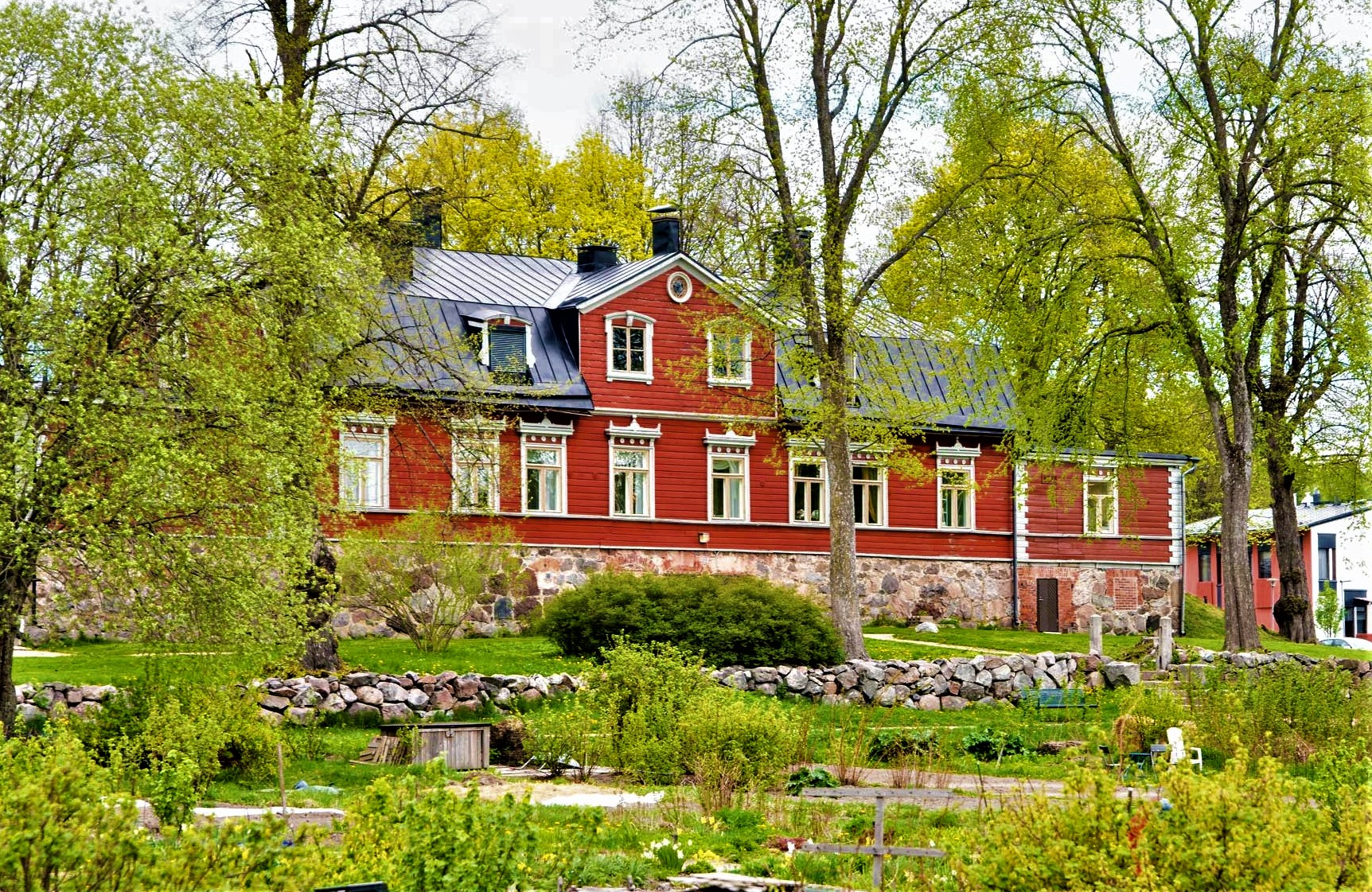
Located in Helsinki, Puotila Manor can trace its history back to the 1540s. The present main building, currently in use as a restaurant, was completed at the beginning of the 19th century. There were two annexes, but one was destoyed in WWI by fire. The granary, built in 1859, has been used as a chapel since 1963 and is one of the most popular chapels for weddings in the city.
Pakankylä Manor
Located in Northern Espoo, the history of Pakankylä Manor, or Kaisankoti Manor as it has been called since 1957, can be traced to the 1540s. The present main building is believed to have been completed in the 18th century, but the current appearance date from the reconstruction of 1920. Today, it is a famous Spa Hotel and restaurant, and the barn within the grounds is used as the Espoo Car Museum.
Pukkila Manor
Located in Piikkiö in southwestern Finland, around 15km east of Turku, the main building of Pukkila Manor was built in 1762 in the Rococo style by Christoffer Johan Rappe, and remodeled in 1870. The herb garden was created in the 18th century and still features the herbs and plants typical of that era. It has been open to the public since 1970.
Rutumi Manor
Located about halfway between Porvoo and Kouvola, Rutumi Manor was founded in 1732. The oldest part of the main building was built in 1794, but was enlarged in the middle of the 19th century, and remodeled by the end of that century. Today, the manor is a popular venue for wedding receptions and private functions, with a café open in the summer season.
Saustila Manor
Located under 40km east of Turku, the owners of Saustila Manor have been known since the mid 15th century. The present main building was built in the Empire style in 1819, thought to be designed by Carl Engel. In 1907 a new veranda and balcony were added, and the interior was redecorated in the 1920s in accordance with the plans of Bertel Jung, Turku’s city architect. Today, the manor is used as a conference centre, for wedding receptions, and for private functions.
Sjundby Manor Castle
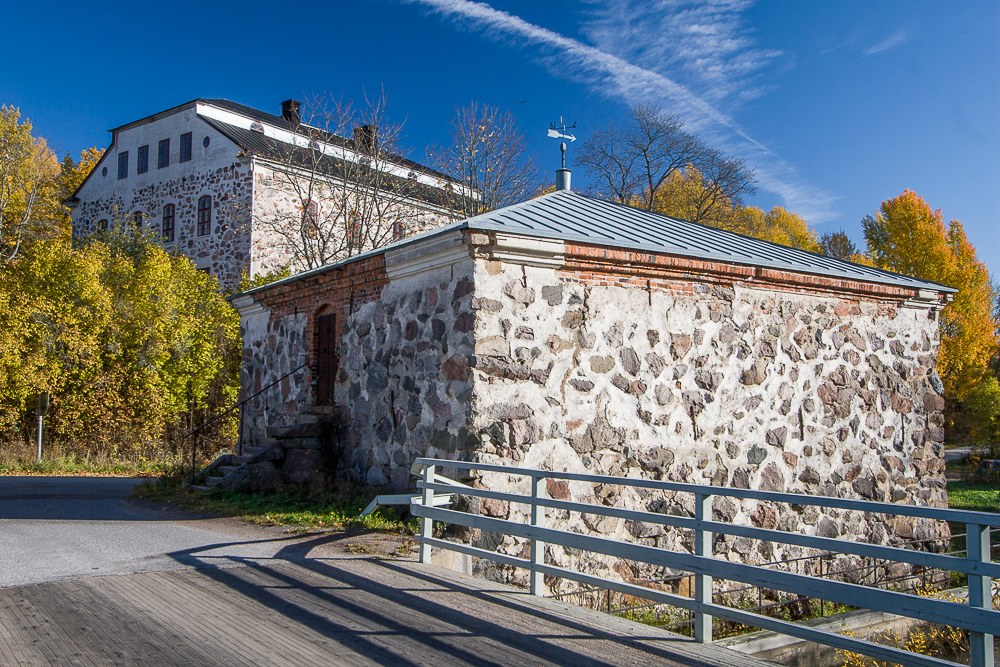
Located in Siuntio, approximately 50km west of Helsinki, Sjundby Manor is one of the most impressive manors in Finland, and has been an inspiration for artists for centuries. Originally built in the 1560s, it was severely damaged by fire in 1723 when attacked by Cossacks. The current appearance dates from the early 19th century, and is open to the public today.
Stor-Kroksnas Manor
Located in Porvoo, Stor-Kroksnas Manor was founded in 1652. The present main building was built in 1914 as the older building had been destroyed by fire the previous year, designed using a mixture of architectural styles, mostly Art Nouveau. It was enlarged in the 1940s, and today the manor is used as a conference and training centre.
Suitia Manor
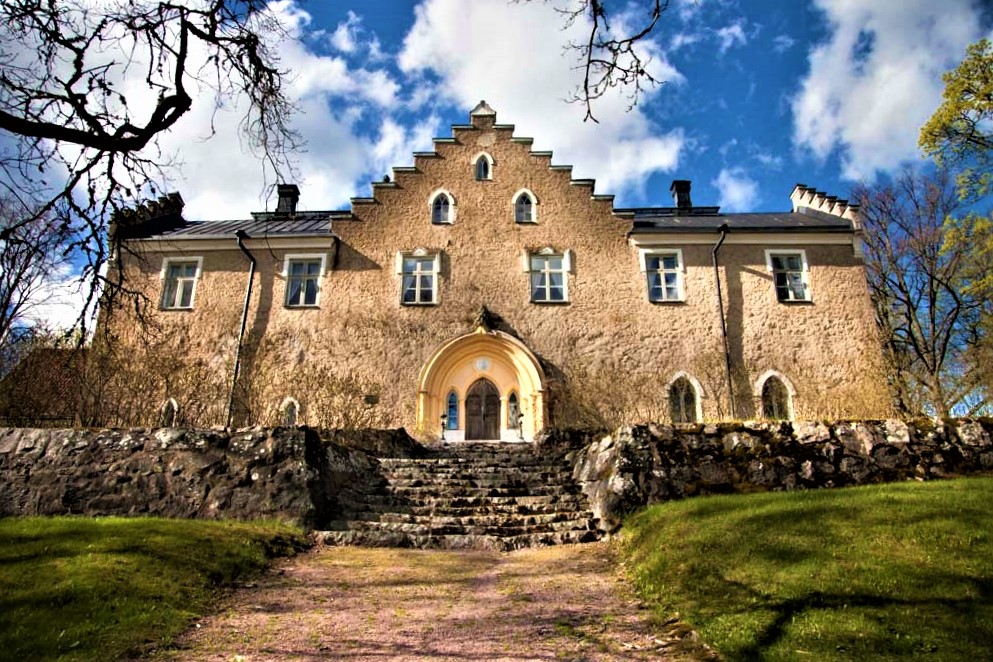
Located in Helsinki, Suitia Manor was founded in 1420, with the manor castle being completed in 1545. In 1730 it was destroyed by the Russians and replaced by a new wooden building. This was then destroyed by fire in 1758 and the castle was restored again in 1761. In 1899 it underwent further reconstruction, with the design being influenced heavily by the romantic notion of medieval castles with Neo-gothic elements. The gardens which surround Suitia Manor date from the 1540s and are the oldest gardens in Finland. The State acquired the manor in 1934, and since 1975 it has been administered by the University of Helsinki.
Sarvilahti Manor
Located in Pernaja, less than 30km east of Porvoo, Sarvilahti Manor was built in the 1670s, and, along with Louhisaari Manor Castle, is one of two palatial manor castles built in the Late Renaissance style in Finland. Unlike Louhisaari, some Baroque elements can be seen in the design. It was severely damaged in the wars of the 18th century, and by fire in 1880. Today, it is owned by the Swedish culture foundation and can be viewed by appointment.


